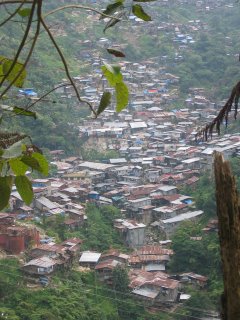Gay Rights

Last November 18, I was called to early duty to cover the 10 am filing of a criminal case against officials of Miriam College for allegedly discriminating against an openly homosexual named Marlon Lacsamana. Marlon and his partner (who would rather remain anonymous) had a symbolic wedding last May at the Church of the Order of St. Aelred, an organization known for gay and lesbian weddings. According to Marlon, his contract as a librarian at Miriam was not renewed because of that wedding.
Many people may not be aware that there is a local law in Quezon City, Ordinance No. 1309 which “prohibits all acts of discrimination directed against homosexuals in any office in Quezon City.” The ordinance authored by Councilors Janet Malaya, Restituto Malangen, Ramon Medalla, Eric Medina, Jorge Banal, Diorella De Leon, and Jesus Suntay was passed by the council on September 16 2003. However the law may be considered too generic because all it says, among a few other things, is that the “city government must afford to homosexuals equal protection guaranteed by the Bill of Rights enshrined in our Constitution.” But at least, there is a law which Marlon can hold on to.
In his affidavit, Lacsmana says after officials of the conservative Catholic institution got wind of his homosexual union, he was fired. He says he was told by Associate Dean Rosa Paragas that he was “like a square peg trying to fit into a hole.”
He adds Vice President Grace Aguilung also told him “kung nasa UP sana tayo walang ganito, pero since nandito ka na sana inalam mo muna yung pinasukan mo kung kayang tanggapin ang mga katulad mo.”
When my team went to Miriam College to get their reaction, the External Affairs office just gave us a blanket denial. They claimed through a statement that “Miriam College has always been committed to the values of truth, justice, and respect for persons.”
I must admit at one point while I was waiting for the statement of the college, I got pissed off when a staff of the External Affairs office told me that they would rather not comment on the case because “we feel the media is only being used by Marlon for his case.” But with all due respect to that lady, I told her that “I don’t think we are being used here because the case is a legitimate story and the public has the right to know about it.”
The case right now is under preliminary investigation at the Quezon City Prosecutors’ Office. If it prospers, it could be the test case if bigotry still exists in the country.
(Photo courtesy of Atty. Jayson Lamcheck)



 Masinloc Coal-Fired Power Plant
Masinloc Coal-Fired Power Plant















